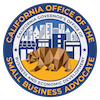If you run an online or retail business, did you know that you might be prohibited from advertising a manufacturer’s products below a certain minimum price?
Minimum advertised pricing (MAP) policies are particularly critical to manufacturers who sell their products for online resale, given the ease at which consumers can now conduct online and mobile price comparisons. MAP policies are also established to help small businesses compete and sell on service and value, rather than entering into a price war with cost-cutting big box stores.
But how legally enforceable are these minimum advertised pricing policies and, as a small business owner, is there a way to get around them in your sales and marketing practices?
The Truth About Minimum Advertised Pricing
Minimum advertised pricing only relates to “advertised” pricing and is perfectly legal under U.S. antitrust statutes. So, essentially, you are limited to advertising MAP-protected products at a certain price, but you can sell these products at any price you choose (often guided by the Manufacturer’s Suggested Retail Price or MSRP).
What Does this Mean for Online Businesses?
Under typical MAP agreements, online retailers can’t “display” any prices that fall below the MAP price. But which part of an online store actually represents advertising display space has caused quite a bit of controversy. For example, say a product is listed on a site for $10. Once a coupon code or other incentive is applied, the actual shopping cart price could come down to $8. Is that still considered “advertising” since a transaction technically hasn’t yet occurred, or is it a commitment to buy and outside the scope of a MAP agreement?
The difference between an advertised price and an actual price that you may be charged has come under scrutiny by U.S. Circuit Courts and FTC rulings, which tend to agree that an actual price displayed in a secure/encrypted shopping cart isn’t subject to MAP – because it’s technically not advertising space, but represents an actual storefront. So in an online world, an actual price may legally end up being a lot lower than the MAP-required advertised price.
In fact, manufacturers are often advised to focus their MAP policies on advertised prices in paid search ads, shopping comparison ads, and internet landing pages but not in shopping carts or other point of sale interfaces.
Look for Alternative Ways to Discount
While it’s not always advisable to lead with price in your marketing efforts, look for other ways to attract customers without breaking any MAP agreements. For example, many manufacturers are okay with your offering free shipping, coupon codes, or a “buy-one-get-one at a discount,” if MAP doesn’t protect that other item. Essentially, as long as the dollar value of the MAP-protected product isn’t reduced, then you are okay. Be careful with coupon codes. It’s safer to advertise the coupon—not the product that it can be applied against—so as not to imply that you are advertising the MAP item at a reduced price. Instead, be clear about what items are excluded from any coupon code promotion.
The Bottom Line
If you are unsure about how your online advertising and marketing practices may border on breaking any MAP agreement you have with a manufacturer, talk to them or consult a legal attorney. Manufacturers do monitor their dealers for potential violations and the law is constantly in flux on this one, so do your due diligence.
For more information about the legality of MAP policies, check out the Federal Trade Commission Guide to Antitrust Laws.





